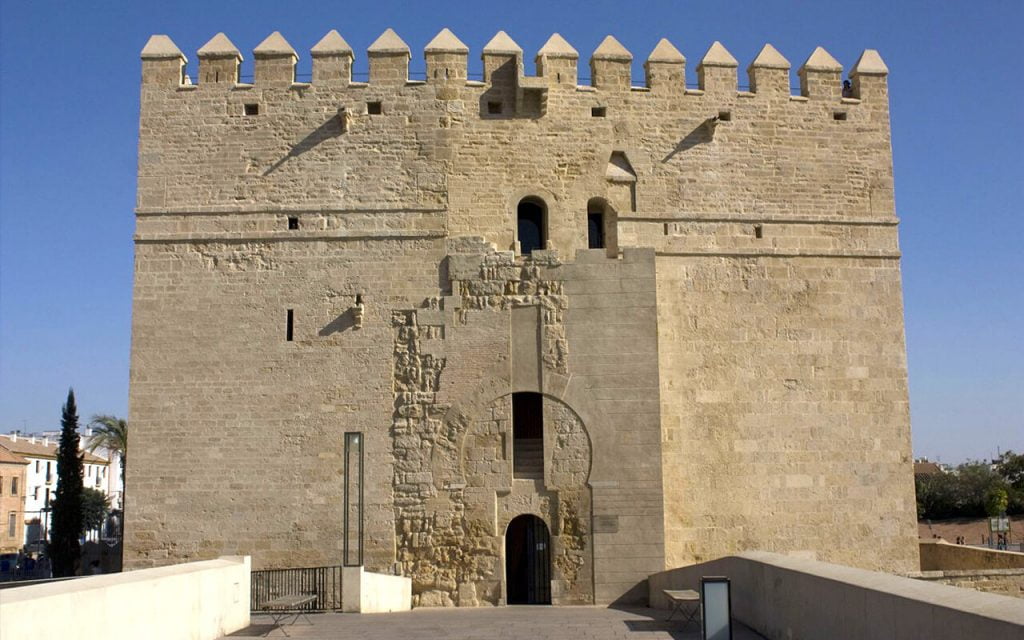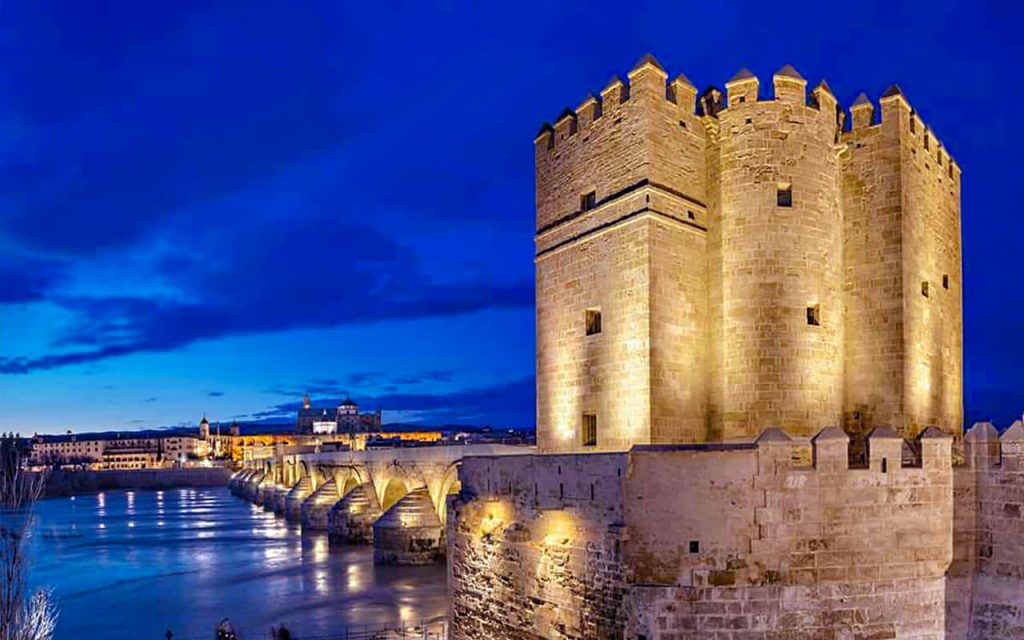Índice Contenido
The Calahorra Tower of Cordoba was an important strategic point of defense and control in the city of Cordoba. There are several references to this monument as an important tower in the Christian conquest.
The horseshoe arch functioned as a gateway attached to the bridge, reinforcing the rectangular enclosure in the twelfth century.
It was at the beginning of the 20th century when it was recognized as a Historic Artistic Monument, due to the different remodeling it suffered throughout history. Today, in the Calahorra Tower, we can find the Living Museum of al-Andalus, where you can see the correlation and experiences between Christian, Jewish and Muslim cultures. In this great museum you can relive the past of the city of Cordoba.
How to get to the Calahorra Tower
The Calahorra Tower is located at the southern end of the Roman Bridge of Cordoba. You can reach it on foot by crossing the Roman Bridge, in addition, at the opposite end, you can find the Mosque-Cathedral of Cordoba (link), being able to enjoy in a short time two of the best monuments of the city of Cordoba.
Getting to the Calahorra Tower by bus
To get to the Torre de la Calahorra by bus you can take the different routes of public transport in the city of Cordoba, which are:
- Bus line 3
- Bus line 6
- Bus line 9
- Bus line 15
- Bus line 16
Price of the Living Museum of Al-Andalus
The prices of the Living Museum of Al-Andalus are:
- Normal rate: 4,50 €.
Children under 8 years old have free admission.
- Reduced rate: 3,00 €.
Students, youth card, pensioners and retirees.
- Super reduced rate: 2,00 €.
Born and residing in Cordoba and province.
- Group rate: 3,00€.
Groups from 15 people, regardless if they are from the European Community.

History of the Calahorra Tower
The Calahorra Tower was built by the Muslims on the Roman Bridge of Cordoba that crosses the Guadalquivir River, at its southern end. Originally it had a defensive use, to control this entrance to the city and the fortress had two towers for this purpose.
When the Christians arrived in Cordoba in the 14th century, after the battle between Pedro I and Enrique de Trastámara for the Castilian throne, the winner Enrique II ordered the construction of a third tower, so that the Calahorra would have a cross plan with three arms. Even with this remodeling, the simplicity that characterized the place was maintained both inside and outside the tower. On the eastern façade, a coat of arms of Castile and Leon can be seen, which further justifies this era.
At the end of the 15th century, with the appearance of gunpowder and the great development of artillery, orb and cross embrasures were added, holes to safely fire gunpowder.
Until the 18th century, the Calahorra Tower continued to maintain its defensive function, until it began to be used as a prison, mainly for Moors who came from the city of Granada and foreign soldiers.
In the 19th century, the tower had a school for girls until 1931, when this monument was declared of Cultural Interest and from 1987 to the present, it houses the Museo Vivo de al-Ándalus (Living Museum of al-Andalus).

What was the function of the Calahorra Tower?
The main function of the Calahorra Tower was defensive, being a strategic point of defense and control of the city. It protected the access by the Roman Bridge due to the facility it originally had for access to the city. It is thought that in its beginnings it had 3 defensive towers in this place making stronger the defense of this entrance to the city.
Frequently Asked Questions about the Calahorra Tower
Where is the Calahorra Tower?
The Calahorra Tower is at the southern end of the Roman Bridge of Cordoba.
When was the Calahorra Tower built?
The Calahorra Tower was built in the Middle Ages, before the conquest of the city by Fernando III. Its origin is not certified but the first information about the tower dates back to 1236 being a difficult obstacle for the Christian siege.
How much does it cost to enter the Living Museum of Al-Andalus in the Calahorra Tower?
The ticket prices to the Museo Vivo de Al-Andalus are varied. The normal rate is 4.5 €, the reduced rate (youth, retirees and pensioners) is 3 €, the super-reduced (born and residents of Cordoba and province) is 2 € and the group rate (15 people) is 3 €.
Finally, children under 8 years old have free admission.

